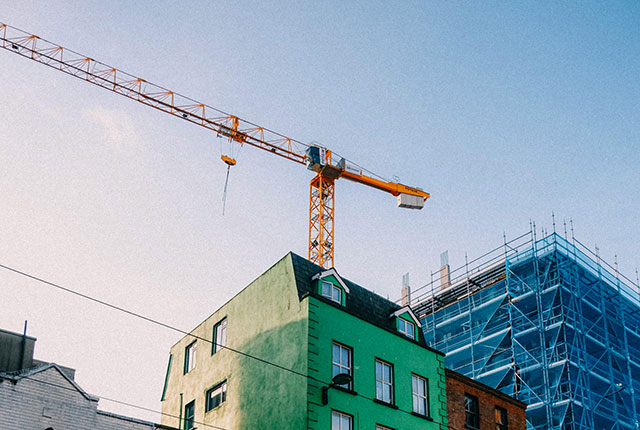
- April 29, 2024
- Attorney Matt Stoddard
- Construction Accidents
Construction jobs are an understandably popular option for Georgia teens seeking an income or some experience for a résumé. The work is project-based, the skills are broadly applicable, and the chance to work around power tools and heavy machinery is a strong draw for many mechanically-minded young people.
Unfortunately, those power tools and heavy machines are a major part of what makes construction sites such dangerous places, especially for people whose brains and bodies are still developing. Construction companies have a duty to recognize how dangerous these jobs can be for teenagers, and to follow the law and common sense to help keep them safe.
Federal Law Forbids Employing Minors for Hazardous Tasks
Child labor laws in the U.S are fairly thorough about outlining what kinds of work minors can do, and under what circumstances.
In some comparatively safe industries, such as retail, the law might only set a minimum age and maximum hours, while allowing working minors to perform all the same tasks as their adult coworkers. Construction, on the other hand, is one of the most dangerous civilian industries in existence, and large portions of the work are classified as too hazardous for minors.
Children and teens 15 and under cannot legally work construction jobs at all. Older teens can work on construction sites in a limited capacity.
Specifically, 16- and 17-year-old construction workers may not work:
- On roofs
- In or near trenches deeper than four feet
- In or near mines and quarries
- On wrecking or demolition tasks
- With lifting devices, such as forklifts, cranes, and scissor lifts
- With power saws, abrasive cutting discs, or woodchippers
- With heavy metalworking machinery, such as punching, bending, shearing, or hammering machines
Adult workers using hazardous machinery may not have minors assist them. Additionally, 16-year-olds are not allowed to drive as part of their work, and 17-year-olds may only do so in small vehicles during daylight hours, with some restrictions.
Child Labor Is on the Rise in the United States, Including in High-Risk Jobs
Disturbingly, many companies are more than willing to break the law — and put children in danger — in order to get more labor for less pay and increase their profits.
This is an age-old problem, but it’s currently getting worse for American children and teens. According to a 2023 report by the U.S Department of Labor, illegal child labor rates have risen by nearly 70% since 2018. There’s also a national trend toward weakening the child labor laws themselves, especially those requiring employers to verify a minor’s age.
The consequences for these working minors can be life-altering and even deadly, especially in hazardous areas of construction work.
In 2019, an Alabama company called Apex Roofing & Restoration hired a 15-year-old boy, who fell 50 feet to his death on his very first day on the job.
Then, here in Georgia in 2022, a 16-year-old boy was killed when a piece of construction equipment pinned him to the ground at the Georgia Rock Quarry in Jackson County.
Neither of these boys should have been working at these locations at all, let alone performing high-risk tasks without adequate supervision, training, and safety precautions.
Construction Workers of All Ages Have a Right to Safety-Conscious Worksites
Of course, turning 18 doesn’t suddenly change a person’s capabilities overnight. Nor does it make that person’s life expendable.
Even if a worker is legally old enough to perform a hazardous task, the employer has a duty to minimize the danger as much as is reasonably possible. This means providing the correct safety gear, and adhering to OSHA safety standards and best practices, including but not limited to:
- Keeping workers out from under suspended loads
- Requiring fall protection for anyone working at a height
- Assigning spotters to assist with operating forklifts and other machinery with blind spots
- Reinforcing trenches and excavations where people will be working
- Making sure workers are fully trained on the machines and tools they’re using
Legal adults or not, it’s especially important for younger, less experienced construction workers to be able to count on their supervisors to give them accurate safety instructions and support for every new task.
Suing Over Construction Accidents Is Tricky, Even When the Victim Is a Minor
Workplace accident lawsuits are a particularly challenging area of law, because of the way the worker’s comp system is set up.
Worker’s comp is a no-fault system, designed to cover workers’ immediate medical expenses quickly and easily. However, it does not fully cover lost wages or the lifetime cost of chronic injuries, and it does not compensate non-economic losses, like pain and suffering. In cases of fatal accidents, worker’s comp does provide the family with a settlement, but it’s typically much smaller than what a wrongful death suit would pay out.
As long as an employer approves the worker’s comp claim for a workplace accident, that employer is immune to lawsuits relating to that accident. It doesn’t matter how egregious employer’s behavior was.
As a result, the key to a successful construction accident wrongful death lawsuit is finding an at fault party other than the deceased victim’s employer. That party might be another subcontractor, an employee of a master contractor, or a manufacturer of a product that was involved in causing the incident to occur.
The Stoddard Firm Has Experience Fighting for Construction Workers and Their Families
Our legal experts excel at helping families affected by workplace injuries overcome the obstacle of employer immunity and collect full compensation from at fault parties.
One of the simplest ways to do this is to look to the other parties involved in the accident, besides the victim’s direct employer. Construction sites in particular often have multiple companies at work on them at any given time. Any company that contributed to the accident and does not employ your child could be liable. This doesn’t only apply to other construction companies either; if your child’s accident involved faulty equipment, the manufacturer of that equipment would also be a valid defendant for a suit.
The popular practice of misclassifying workers as independent contractors in order to skirt around legal protections for employees has also ironically made workplace accident lawsuits more feasible. If the company your child worked for claims that your child was an independent contractor, we may be able to use the company’s own claims against them to argue that employer immunity does not apply.
The Stoddard Firm is deeply passionate about holding negligent companies accountable, and helping injured individuals and families get the compensation they deserve. If your child has been killed or injured while working on a construction site, reach out to the Stoddard Firm by phone or chat for a free consultation on how we can help.

 Matt Stoddard is a professional, hardworking, ethical advocate. He routinely faces some of the nation’s largest companies and some of the world’s largest insurers – opponents who have virtually unlimited resources. In these circumstances, Mr. Stoddard is comfortable. Mr. Stoddard provides his strongest efforts to his clients, and he devotes the firm’s significant financial resources to presenting the strongest case possible on their behalf. Matt understands that his clients must put their trust in him. That trust creates an obligation for Matt to work tirelessly on their behalf, and Matt Stoddard does not take that obligation lightly. [
Matt Stoddard is a professional, hardworking, ethical advocate. He routinely faces some of the nation’s largest companies and some of the world’s largest insurers – opponents who have virtually unlimited resources. In these circumstances, Mr. Stoddard is comfortable. Mr. Stoddard provides his strongest efforts to his clients, and he devotes the firm’s significant financial resources to presenting the strongest case possible on their behalf. Matt understands that his clients must put their trust in him. That trust creates an obligation for Matt to work tirelessly on their behalf, and Matt Stoddard does not take that obligation lightly. [